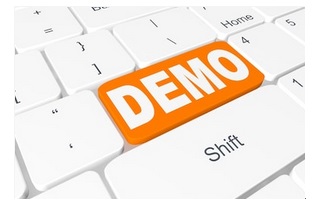Providing Benefits when Self-Employed
Retirement Plans
Are You Thinking of Yourself?
There's great freedom in having your own rental business. But it can be too easy to neglect your own benefits, especially if you're starting up and inclined to pour all your profits back into growing your business.
Corporate employees can depend on their employers to implement forced savings plans like 401(k)s. If you're on your own, you have to implement your own plan, write a check each month to an implemented plan, and this takes discipline. But if you don't provide a retirement savings plan and health-care insurance, you face a troubled future, no matter how successful your business is today.
Face it, for most people, Social Security isn't enough. As a business owner, you have the power to make more choices when it comes to your retirement savings. There are a variety of different options for the self-employed, each with different contribution limits, employer and employee requirements and deadlines, but here's a quick overview of some of the more popular plans.
A Savings Incentive Match Plan (SIMPLE) IRA is open to the self-employed as well as business owners with 100 or fewer employees who earned $5,000 or more on payroll (as of 2019). Employers make a matching contribution of up to 3% of each participant's compensation or a flat contribution of 2% of each eligible employee's compensation. If you have employees, consider a SIMPLE plan. These have no administrative costs and employer match is limited to those employees who choose to make contributions. Also, a SIMPLE plan is the least expensive way to put a significant amount away each year for yourself. But size matters. If you have more than 20 employees, you may want to implement a 401(k). Fewer than 20 employees and the annual administrative costs of a 401(k) become burdensome. For this reason, if you have only a few employees, a SIMPLE plans have relatively low administrative costs, but they also don't permit employees to defer as much as a 401(k) does.
A Solo 401(k)/Self-Employed 401(k) is only open to the self-employed and business owners with no employees other than a spouse. You can cap your contributions as an employee and then have your business contribute up to 20 percent of your total earnings. You don't have to contribute a set amount each year so you can give less in a tough year and more in a good year. If you make a contribution to the account as an employer, the contribution is tax deductible as a business expense. The only con is that a solo 401(k) is more complicated than an IRA. You'll need a plan administrator to set it up. While it isn't incredibly expensive, it will cost money to set up and maintain. Once there is $250,000 in the account, you have to report the benefits annually using form 5500.
A Defined Benefit Plan is also open to the self-employed and is best for owners who are looking to save a lot of money and who consistently have money to save. You can save more than $1000,000 each year for retirement. And, because it is different from other retirement plans, you can combine it with a Solo 401(k) or SEP IRA to save more than $150,000 each year. Defined benefit plan contributions can be written off as business expenses, too. Unfortunately, costs are high. An actuary will determine minimum funding levels each year, and you have to make the minimum funding. Payouts are defined when the plan is set up, and you can withdraw only a set amount per year during retirement, unless you roll the money into another retirement account. If you have employees, you must offer it to them as well. (Which is why such plans have become less popular for large businesses but may be a good option for a solo business.)
The implementation of the Affordable Care Act has changed health insurance. Small business owners have historically had a much harder time providing themselves and their employees with insurance due to rising health insurance costs; meanwhile bigger businesses have remained largely unaffected due to the leverage buying large group health plans gives them. This problem has gotten more severe in the past decade.
The Affordable Care Act mandates that employers with 50 or more full-time employees must provide health insurance. But it also allows for generous tax credits to smaller businesses with 25 or fewer full-time employees. It's too complicated to condense, but a decent summary of what the Affordable Care Act means for small businesses can be found at: Affordable Health Care for Small Businesses
Disability Insurance: If you're the sole proprietor of a small business, the likelihood is excellent that without you, there wouldn't be a business. But the good news is that disability insurance is usually very inexpensive if you're in good health. State laws vary, and if sole proprietorships, LLCs and partnerships are allowed to participate in state disablity plan, this might be your best and least expensive option. If not, comparison shop, both online, through an agent or through association and trade groups. If you can gain access to a group plan, your costs will be substantially lower.
There's More

Pricing
RentControl's price is based on the number of simultaneous users, and is sold as a permanent license, meaning that there is no requirement to pay a lease fee each year. Free support is included with your purchase price for the first year and includes help by phone or email as well as new versions of RentControl.

Demos
You have several options for seeing how RentControl works, including an over-the-web demo, an on-line tour, or we'll help you install a free demo that you can use for 30 days.

Free
Get a free buyer's checklist that will make it easier to compare rental software on a feature-by-feature basic. We also offer some free documents with useful business information.

Contact Us
You can always contact us for more information or help by calling 609-924-7114 or filling out a contact form.
Features
Barcode and RFID Use
RentControl provides extensive barcode support to make keeping track of inventory, selecting equipment for a rental or sale, and checking equipment in after a rental much quicker and less error-prone. Barcoding is supported either as labels or RFID tags.
Your Inventory on the Web
Increase business by putting your inventory on the web. RentControl has a built-in export that uploads your inventory and prices to your website with a single click, and downloads requests for quotes or orders with the same ease. Click here for more details.
Sample Websites
If you are interested in having your inventory on the web, check out our general demo or our linen demo.
Purchase Order Facility
RentControl offers an optional, built-in purchase order facility. Use it to create and send purchase orders and to automatically have assets added to your inventory when received.
Instruction Videos
Getting started using RentControl? Our how-to videos show the software in action:
• Instant Rental
• From Reservation to Rental
• Return a Rental